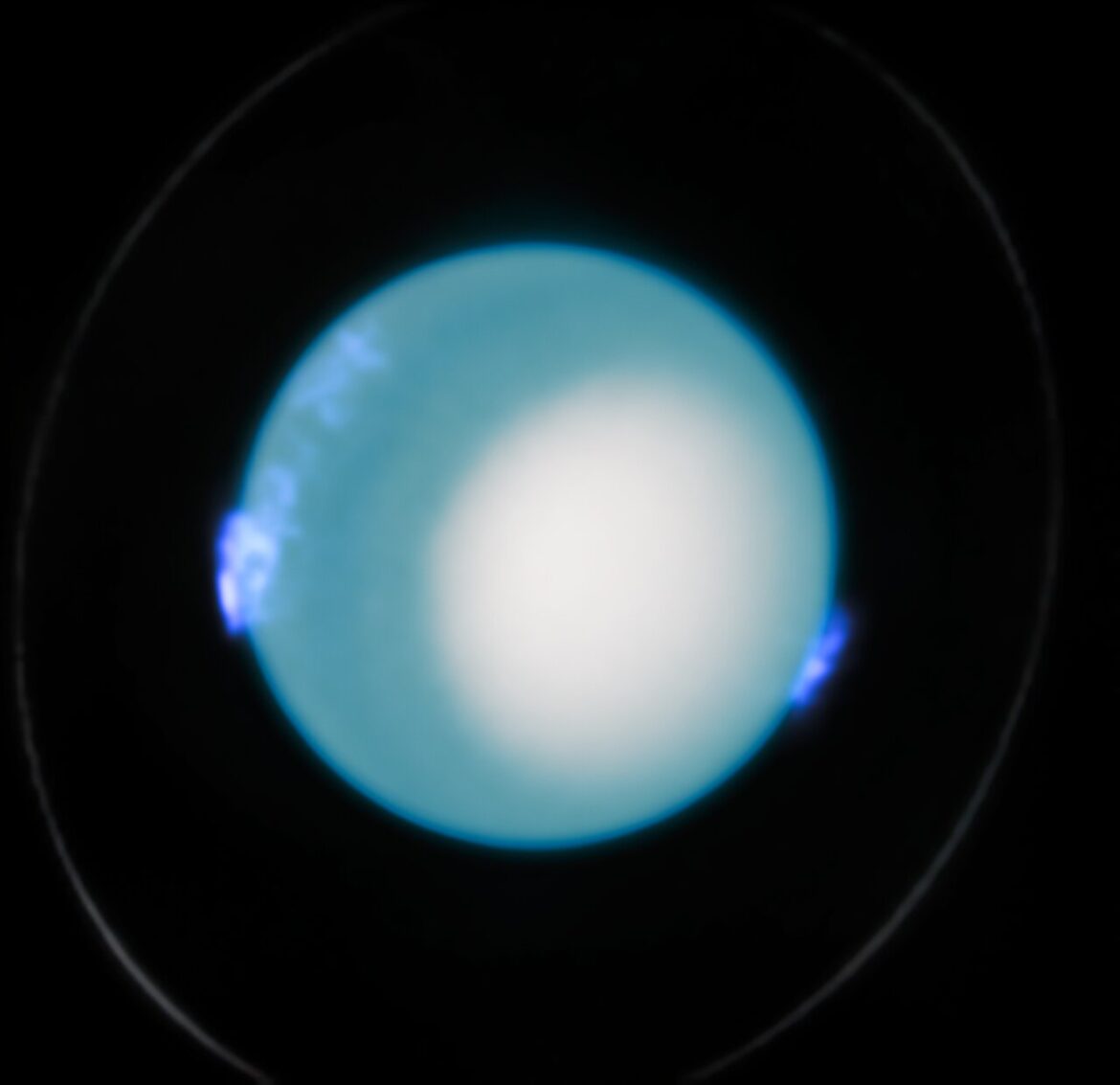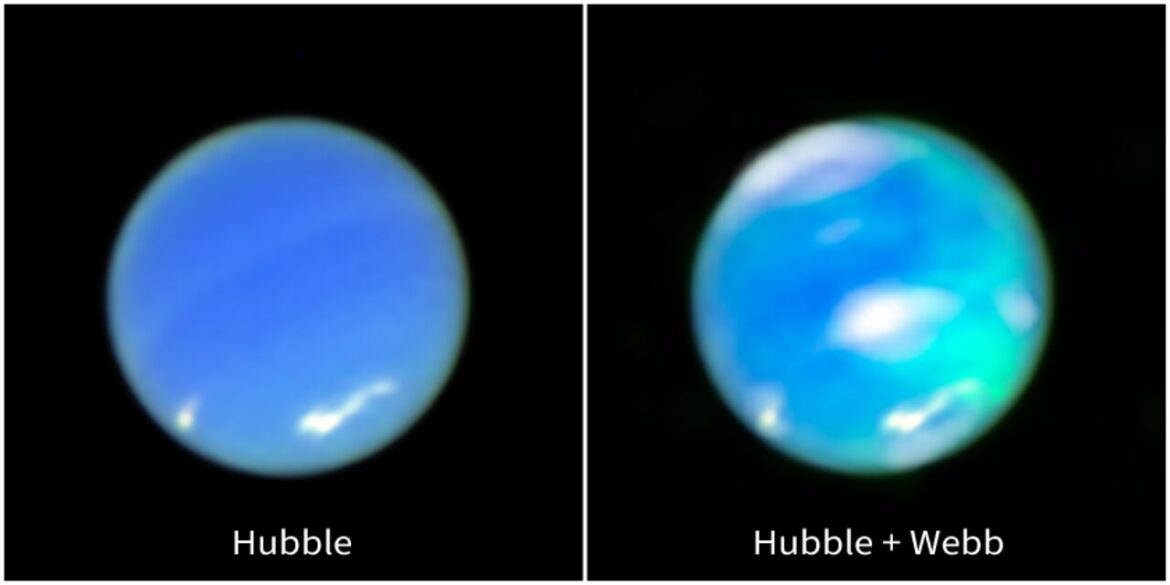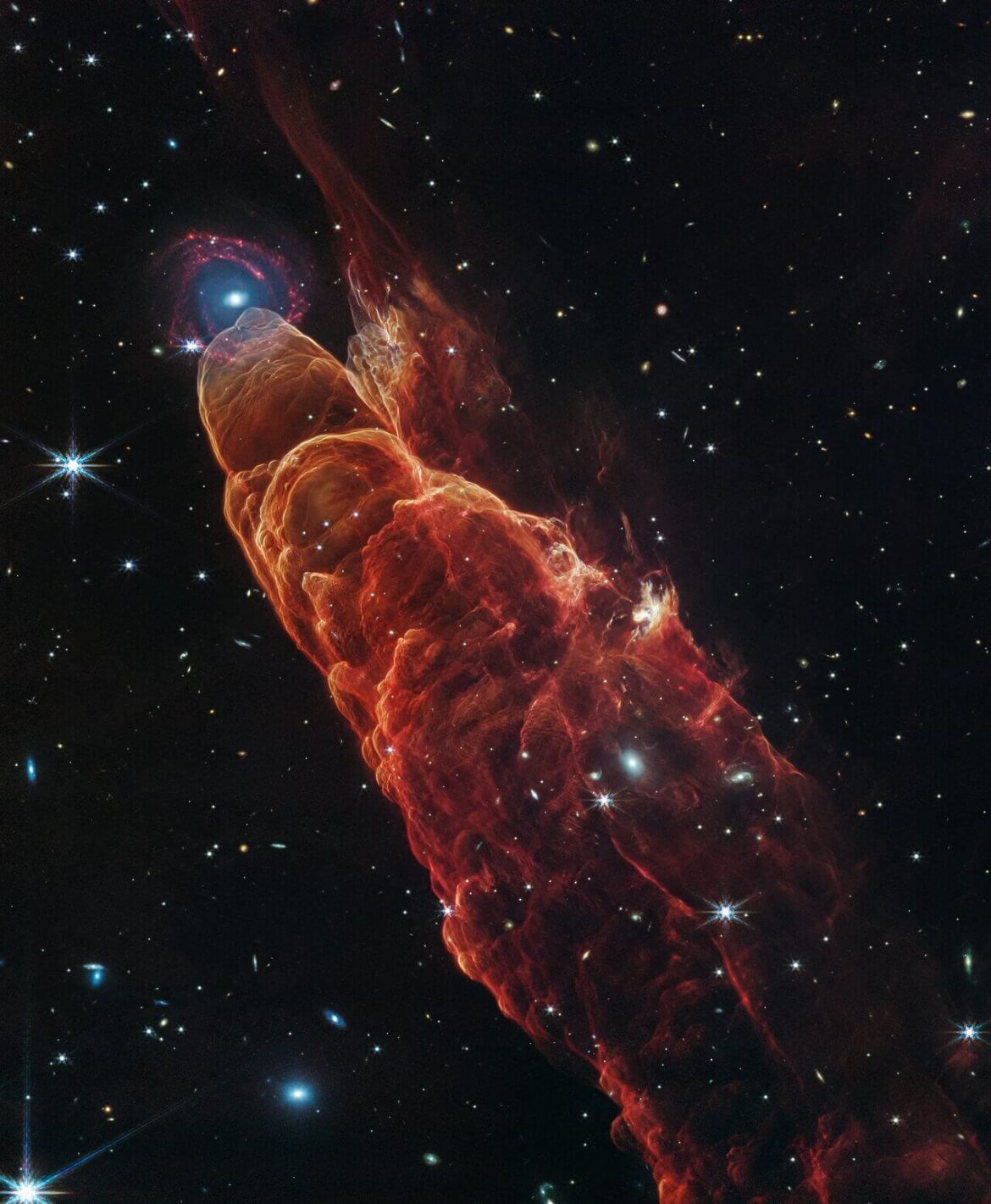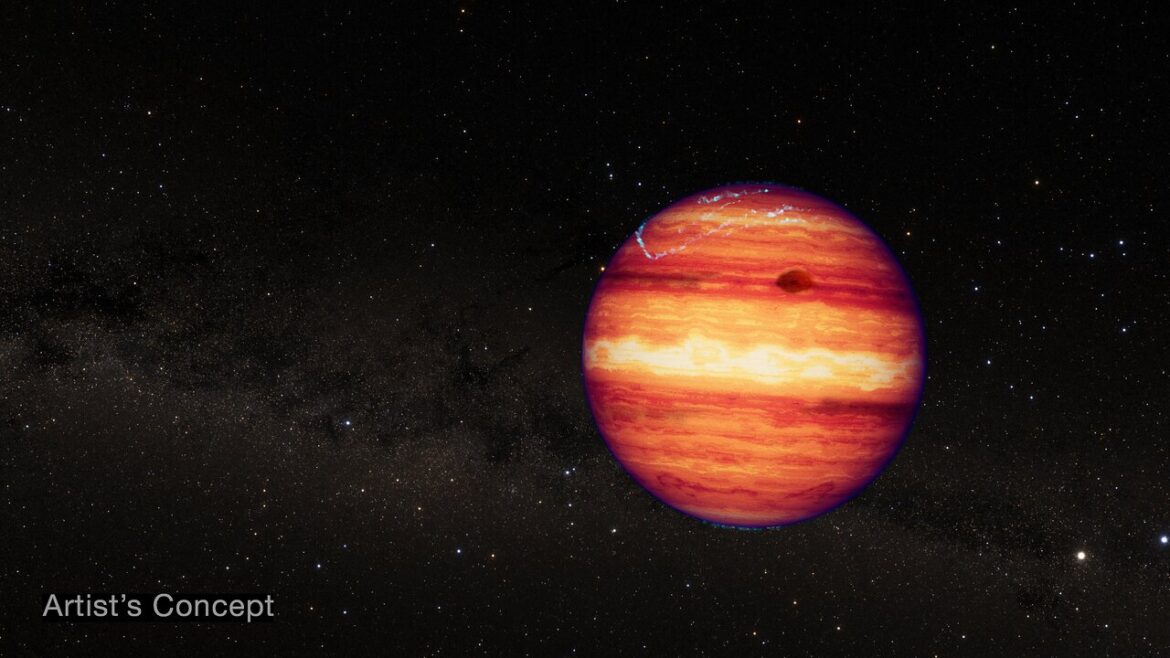NGC 1514: dying star’s energetic display comes into full focus
The NASA/ESA/CSA James Webb Space Telescope has taken the most detailed image of planetary nebula NGC 1514 to date thanks to its unique mid-infrared observations. Webb’s image brings out the nebula’s nuances, particularly its “fuzzy” dusty rings. Also look for holes in the central pink region where material has broken through. Two central stars, which appear as one in Webb’s image, formed this scene over thousands of years — and will keep at it for thousands more.

Credit: NASA, ESA, CSA, STScI, Michael Ressler (NASA-JPL), Dave Jones (IAC)
Gas and dust ejected by a dying star at the heart of NGC 1514 came into complete focus thanks to mid-infrared data from the James Webb Space Telescope. Its rings, which are only detected in infrared light, now look like fuzzy clumps arranged in tangled patterns, and a network of clearer holes close to the central stars shows where faster material punched through.
The rings around NGC 1514 were discovered in 2010, but now Webb is allowing scientists to comprehensively examine the turbulent nature of this nebula.
This scene has been forming for at least 4,000 years — and will continue to change over many more millennia. At the center are two stars that appear as one in Webb’s observation, and are set off with brilliant diffraction spikes. The stars follow a tight, elongated nine-year orbit and are draped in an arc of dust represented in orange.
One of these stars, which used to be several times more massive than our Sun, took the lead role in producing this scene. Once the star’s outer layers were exhausted, only its hot, compact core remained. As a white dwarf star, its winds both sped up and weakened, which might have swept up material into thin shells.
Its hourglass shape
Webb’s observations show the nebula is at a 60-degree angle, which makes it look like a can is being poured, but it’s far more likely that NGC 1514 takes the shape of an hourglass with the ends lopped off. Look for hints of its pinched waist near top left and bottom right, where the dust is orange and drifts into shallow V-shapes. When this star was at its peak of losing material, the companion could have gotten very close, resulting in these unusual shapes. Instead of producing a sphere, this interaction might have instead formed rings.
Though the outline of NGC 1514 is clearest, the hourglass also has “sides” that are part of its three-dimensional shape. Look for the dim, semi-transparent orange clouds between its rings that give the nebula body.

Credit: NASA, ESA, CSA, STScI, NASA-JPL, Caltech, UCLA, Michael Ressler (NASA-JPL), Dave Jones (IAC)
A network of dappled structures
The nebula’s two rings are unevenly illuminated in Webb’s observations, appearing more diffuse at bottom left and top right. They also look fuzzy, or textured. Scientists believe the rings are primarily made up of very small dust grains, which, when hit by ultraviolet light from the white dwarf star, heat up enough to be detected by Webb.
In addition to dust, the telescope also revealed oxygen in its clumpy pink center, particularly at the edges of the bubbles or holes.
NGC 1514 is also notable for what is absent. Carbon and more complex versions of it, smoke-like material known as polycyclic aromatic hydrocarbons, are common in planetary nebulae (expanding shells of glowing gas expelled by stars late in their lives). Neither were detected in NGC 1514. More complex molecules might not have had time to form due to the orbit of the two central stars, which mixed up the ejected material. A simpler composition also means that the light from both stars reaches much farther, which is why we see the faint, cloud-like rings.
What about the bright blue star to the lower left with slightly smaller diffraction spikes than the central stars? It’s not part of this scene. In fact, this star lies closer to us.
This planetary nebula has been studied by astronomers since the late 1700s. Astronomer William Herschel noted in 1790 that NGC 1514 was the first deep sky object to appear genuinely cloudy — he could not resolve what he saw into individual stars within a cluster, like other objects he catalogued. With Webb, our view is considerably clearer.
NGC 1514 lies in the Taurus constellation approximately 1,500 light-years from Earth.

The north and east compass arrows show the orientation of the image on the sky. Note that the relationship between north and east on the sky (as seen from below) is flipped relative to direction arrows on a map of the ground (as seen from above).
The scale bar is labeled in light-years, which is the distance that light travels in one Earth-year. (It takes 0.6 years for light to travel a distance equal to the length of the scale bar.) One light-year is equal to about 5.88 trillion miles or 9.46 trillion kilometers.
This image shows invisible mid-infrared wavelengths of light that have been translated into visible-light colours. The colour key shows which MIRI filters were used when collecting the light. The colour of each filter name is the visible light colour used to represent the infrared light that passes through that filter.
Credit: NASA, ESA, CSA, STScI, Michael Ressler (NASA-JPL), Dave Jones (IAC)
Press release from ESA Webb.






























